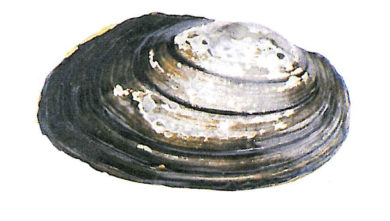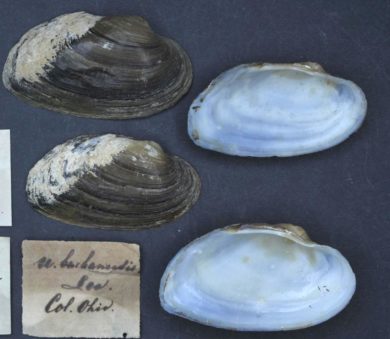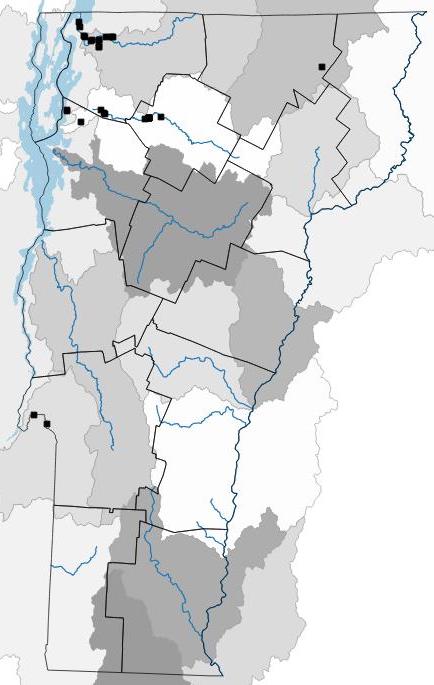
 The Cylindrical Papershell is found in the Great Lakes-St. Lawrence and the Ohio-Mississippi watersheds. It reaches its easternmost range limit in Lake Champlain and the St. Lawrence River.
The Cylindrical Papershell is found in the Great Lakes-St. Lawrence and the Ohio-Mississippi watersheds. It reaches its easternmost range limit in Lake Champlain and the St. Lawrence River.
Key Characteristics
- Size: Length to 3 inches
- Shape: Elongate and elliptical with a blunt and pointed posterior end. Beak is small and raised just above the hinge line.
- Periostracum: Yellow-green to brown with small green rays. Shell is smooth and shiny.
- Lateral Teeth: Absent
- Pseudocardinal Teeth: Appear as very small, irregular lumps along the hinge line.
- Nacre: Iridescent, bluish-white, or silver
- Similar Species: creeper, giant floater
Conservation Status
- State and Global Rank: S1S2 G5
- Vermont Wildlife Action Plan: Species of Greatest Conservation Need
- Vermont Endangered Species Law: Endangered
- U.S. Endangered Species Act: not listed
- IUCN Red List: not assessed
Habitat
Found in the shallow water small streams and the headwaters of larger streams near shore in silt. Prefers sandy or muddy substrate.
Host Species
Bluegill, black crappie, spotfin shiner, largemouth bass, mottled sculpin, bluntnose minnow, common shiner, Iowa darter, white sucker.
More information
- Encyclopedia of Life
- NatureServe
- Musselp
- iNaturalist species page
Range
Known from three drainages in far western Vermont. There is an historic collection from the Clyde River in northeastern Vermont.
Distribution map has locations where this species has been documented and digitized into the atlas database. Systematic surveys have not been conducted for many species and those surveys that have been conducted have been largely focused on endangered species. Therefore, in some cases, the actual distribution of freshwater mussels may be more extensive than what is presented here. Shaded areas are watershed sub-basins and river main stems are shown.







